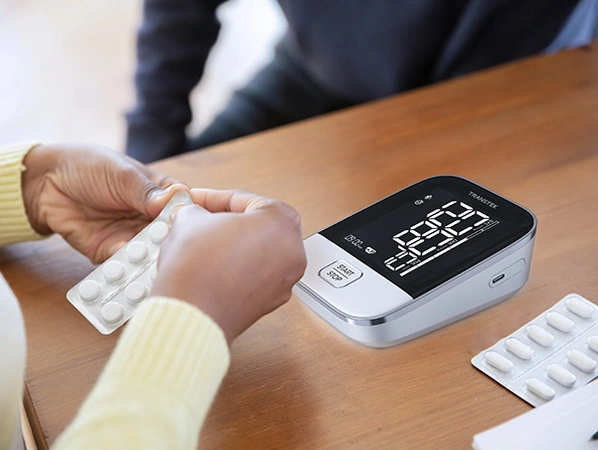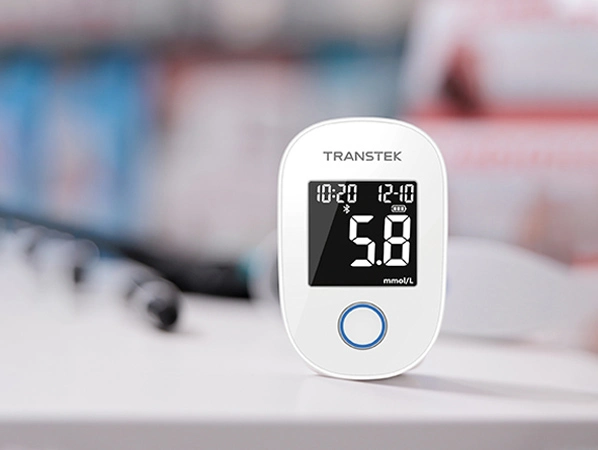Of the many tests that may be performed, your blood pressure will almost certainly be checked. This is because blood pressure is a well-known measure of cardiovascular health, which allows you to understand the internal operation of the heart and overall health.
When your heart beats, your heart's blood vessels and arteries are under pressure, sending blood, oxygen, and nutrients to the body. Between heartbeats, the heart rests and, importantly, this pressure level drops. Blood pressure is measured in units of "millimeters of mercury" or mmHG and shows you whether these pressure levels are acceptable or worthy of attention.
Blood pressure: systolic and diastolic blood pressure
Place the cuff around the arm and take a blood pressure reading consisting of two numbers: systolic and diastolic.
Systolic blood pressure is usually the higher number in the reading. It measures the pressure exerted by the heart on each heartbeat. Diastolic blood pressure, or the usually lower number in the reading, measures the heart's pressure between two beats of the heart.
Blood pressure is an important sign of cardiovascular health, but what does it mean? High blood pressure is often called a "silent killer" and has no symptoms. People may experience headaches or vomiting due to high blood pressure, but for most people, the symptoms of high blood pressure are rare, so high blood pressure may not be detected.
Long-term high blood pressure increases your risk of many other health conditions, including:
Heart disease, stroke, kidney disease, sexual dysfunction, angina, peripheral artery disease, etc., may increase your risk of other cardiovascular diseases. Essentially, the heart must work harder to pump blood throughout the body, thus increasing the risk of various cardiovascular and cerebrovascular events. Regularly monitor your blood pressure and make any concerns with your healthcare doctor. This is an important step to protect your precious heart muscle and other vital organs.
Blood pressure measurement
Blood pressure is usually collected on the upper arm above the brachial artery. Blood pressure measurement methods include auscultation and oscillography.
Auscultation
This method uses a mercury sphygmomanometer (or blood pressure cuff), which is often considered the "gold standard" for office blood pressure measurement. Usually used in a clinical environment, the cuff is placed around the upper arm and inflated. The doctor listens to the so-called "Korotkoff" sound with a stethoscope or hears the pulsating blood flow when the cuff is deflated.
Oscillometric
The oscillometric technique forms the basis of home sphygmomanometers and other electronic monitors used in various settings. When the blood pressure cuff gradually deflates during use, the device's oscillations start at approximately systolic pressure and continue below the diastolic pressure. Then use a specific formula to estimate blood pressure empirically. The advantages of blood pressure meters are convenience, eliminating practitioners' errors, eliminating white coat syndrome, multiple readings, etc.
How to measure blood pressure correctly
Many factors can affect your blood pressure reading. According to the American Heart Association, you should not smoke, drink caffeinated beverages or exercise for 30 minutes before taking blood pressure readings. It is recommended to rest for five minutes and empty the bladder before starting the blood pressure test. You should sit on a supporting chair with your feet flat on the floor, and your arms should be supported on the level surface of the heart. Blood pressure should usually be measured at the same time each day, and you should take two to three readings at a time, with an interval of one minute.
Blood pressure reading
The American Heart Association approves five blood pressure ranges. These ranges are best used based on consistent readings at these levels rather than an isolated reading.
Normal blood pressure: systolic blood pressure less than 120 mm Hg and diastolic blood pressure less than 80 mm Hg.
Increased blood pressure: 120-129 mm Hg systolic blood pressure and less than 80 mm Hg diastolic.
Hypertension stage 1: systolic blood pressure 130-139 mmHg or diastolic blood pressure 80-89 mmHg.
Hypertension stage 2: 140 mm Hg or higher systolic blood pressure or 90 mm Hg or higher diastolic blood pressure.
Hypertension crisis: If your blood pressure suddenly exceeds 180/120 mmHg, please wait five minutes and then test your blood pressure again.
Both systolic and diastolic blood pressure are important. For people over 50 years of age, systolic blood pressure is usually given as the main cardiovascular risk factor. With the arteries' natural stiffness and the formation of long-term plaques, systolic blood pressure usually rises with age. Studies have shown that in people 40-89 years old, each increase in systolic blood pressure of 20 mmHg or diastolic blood pressure of 10 mmHg doubles the risk of ischemic heart disease and stroke death.


